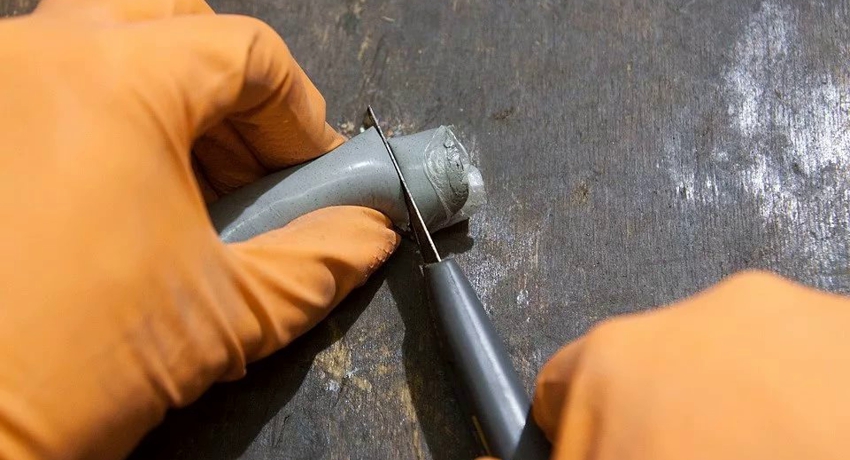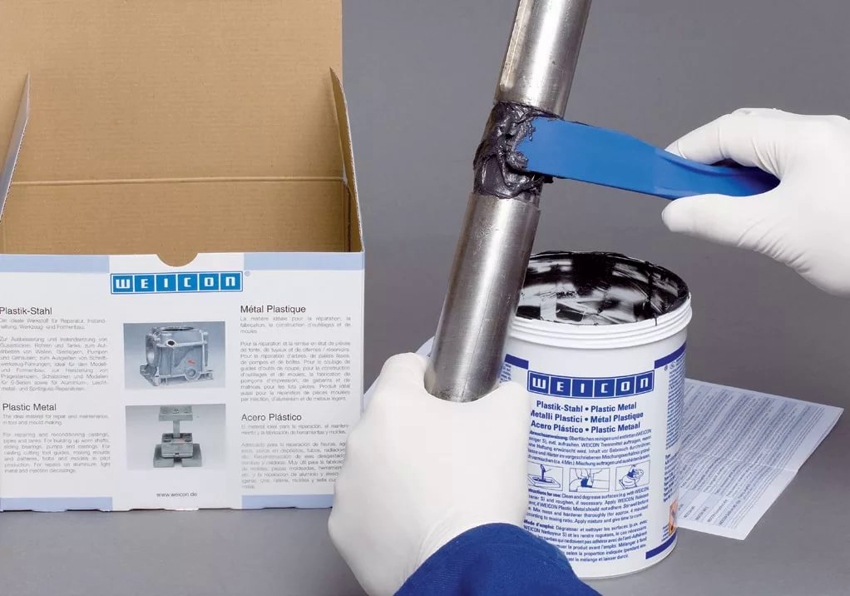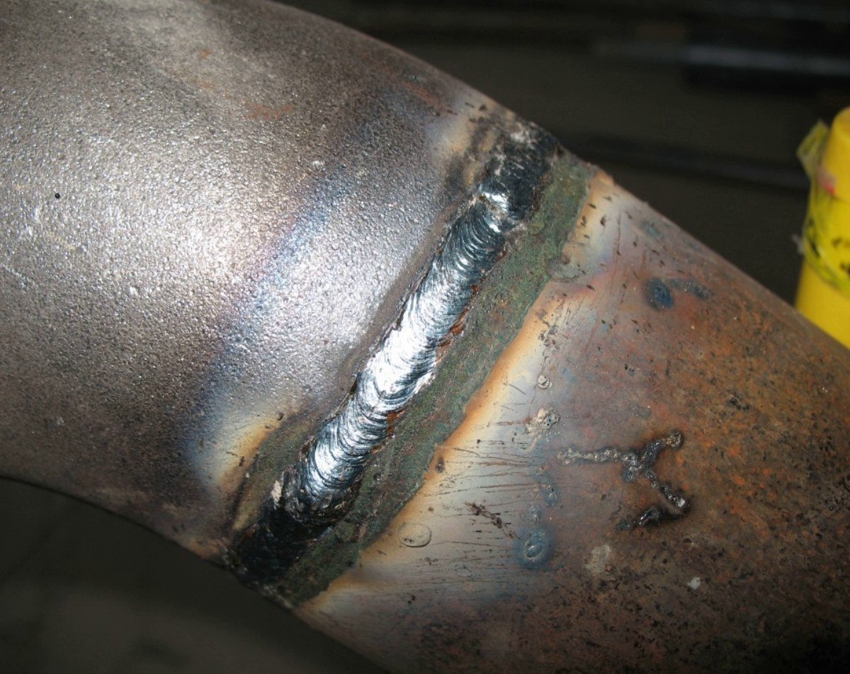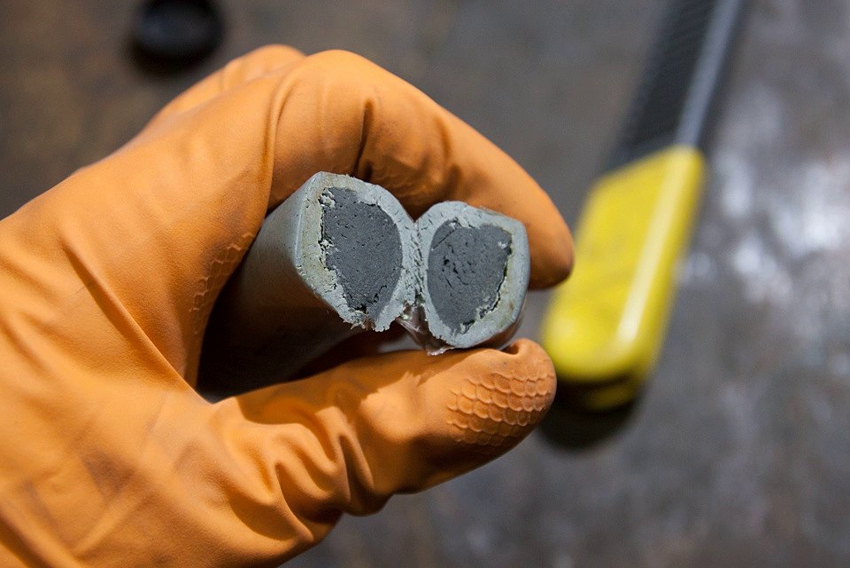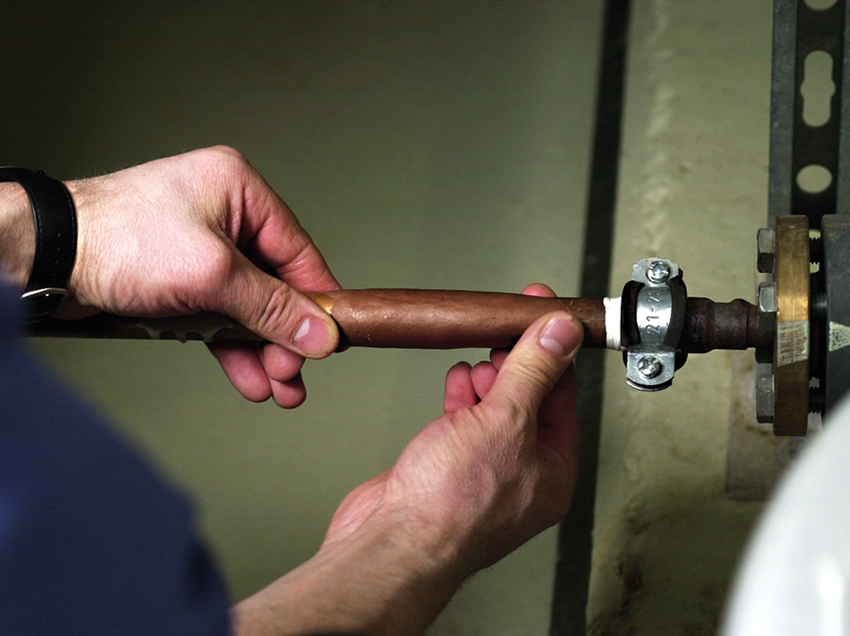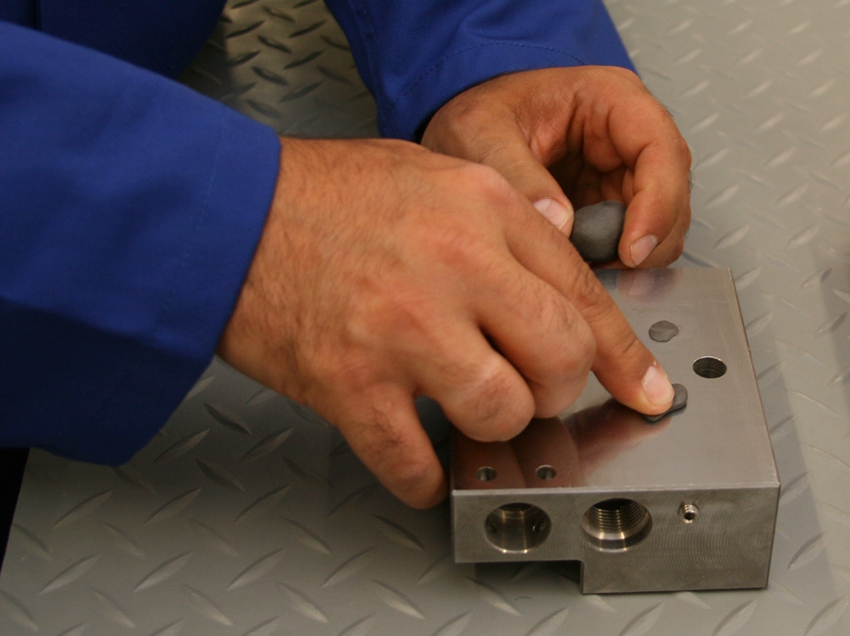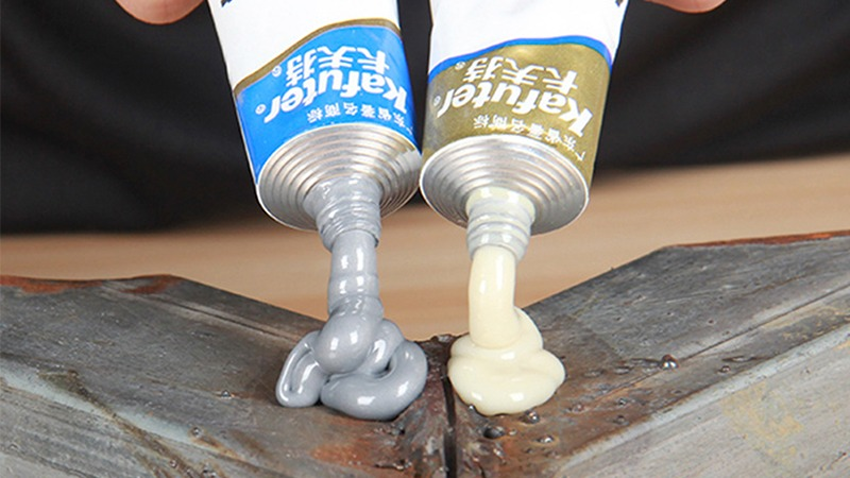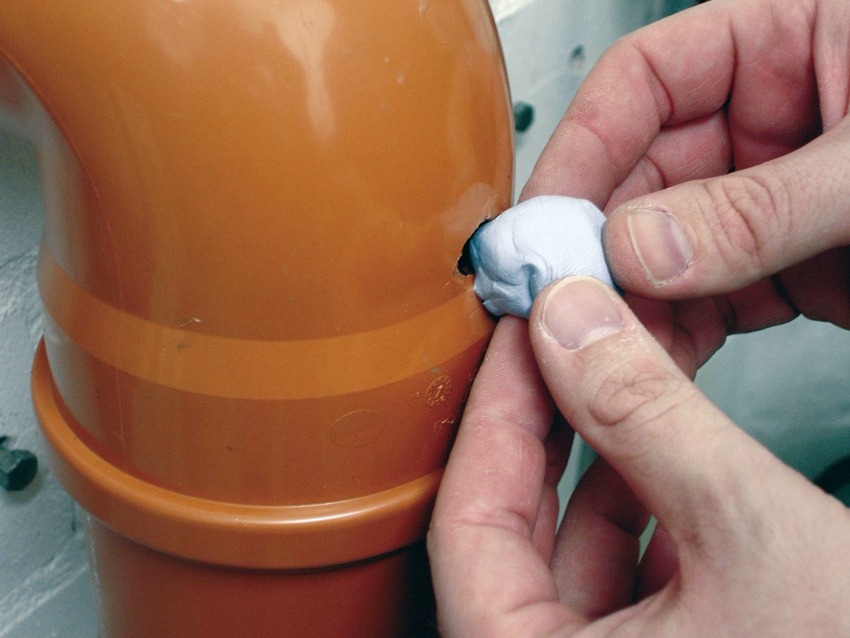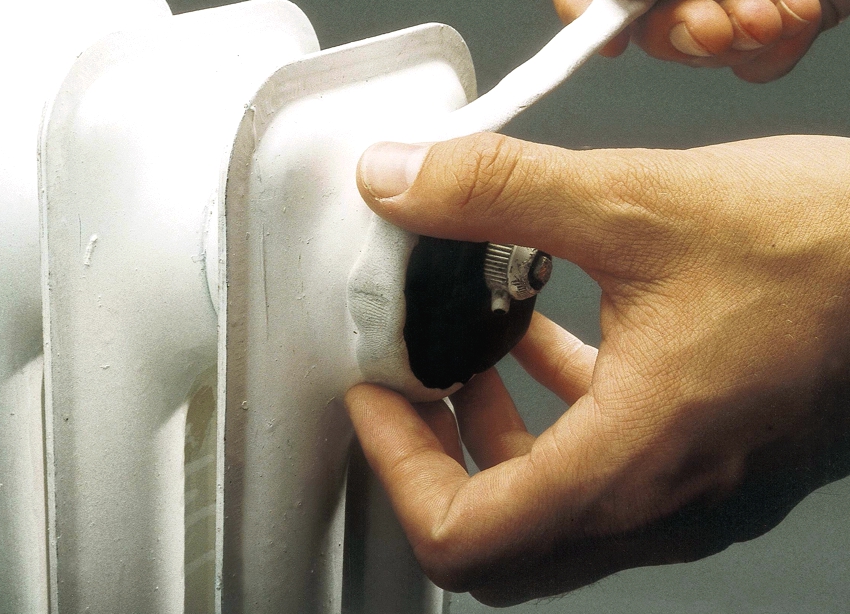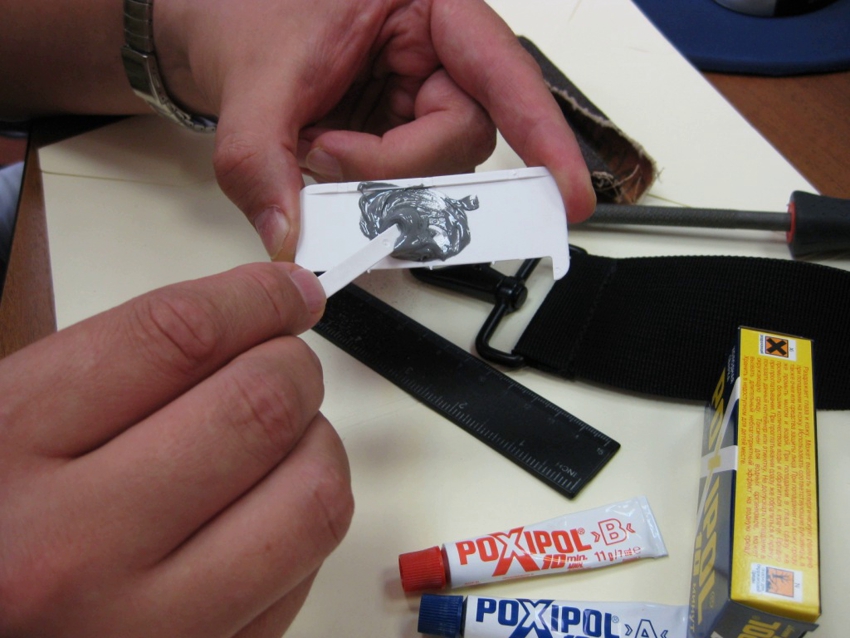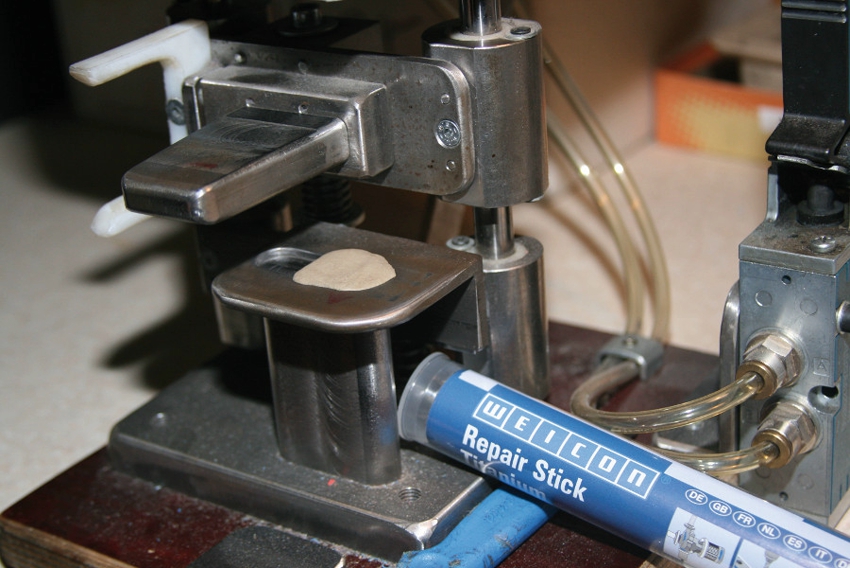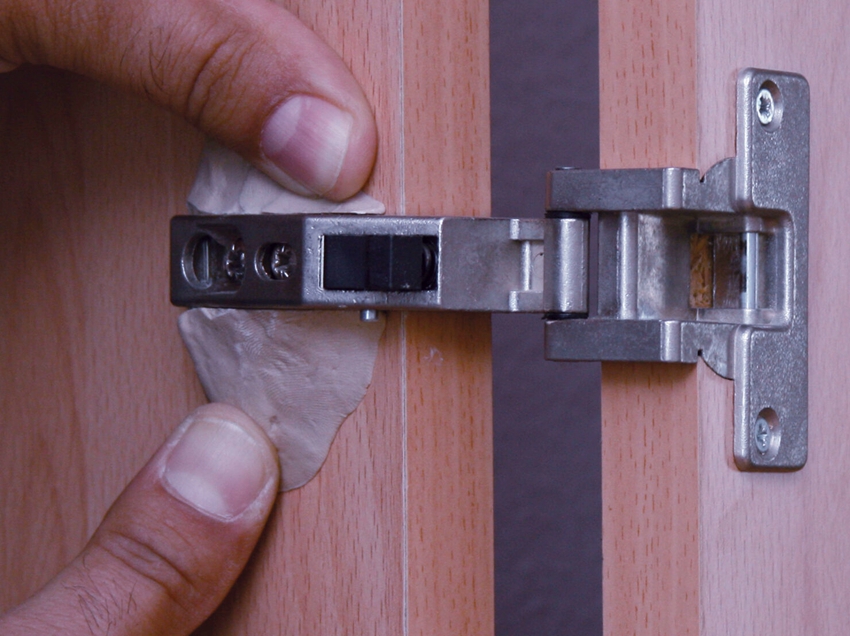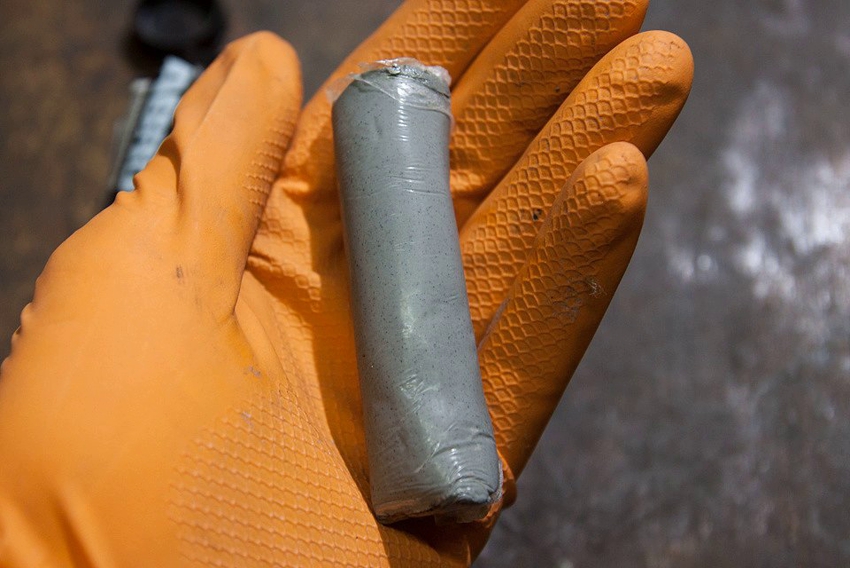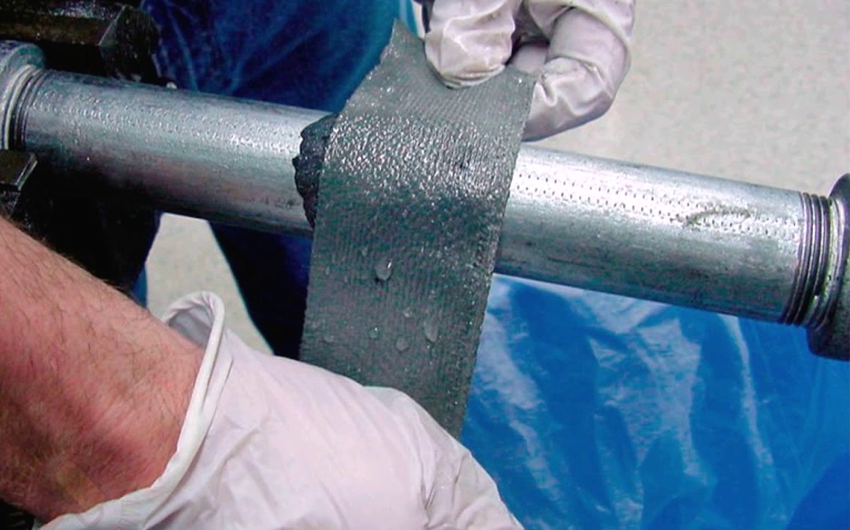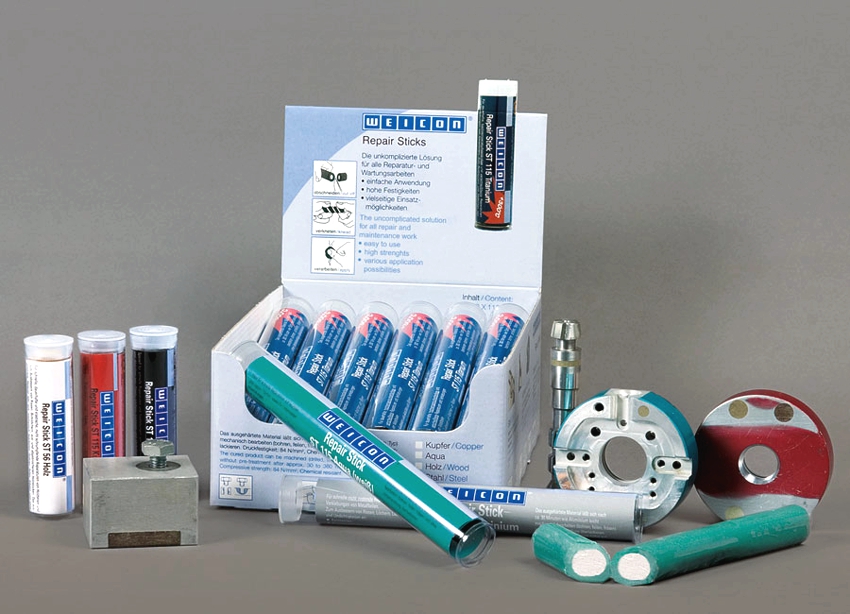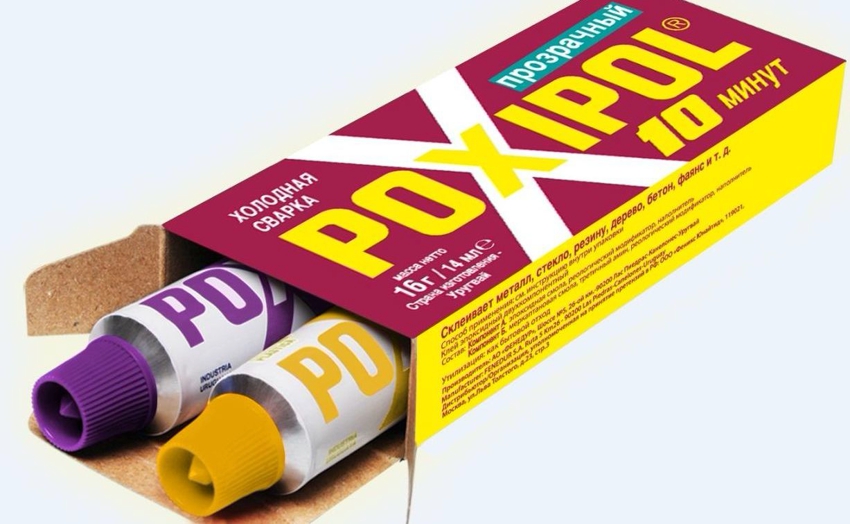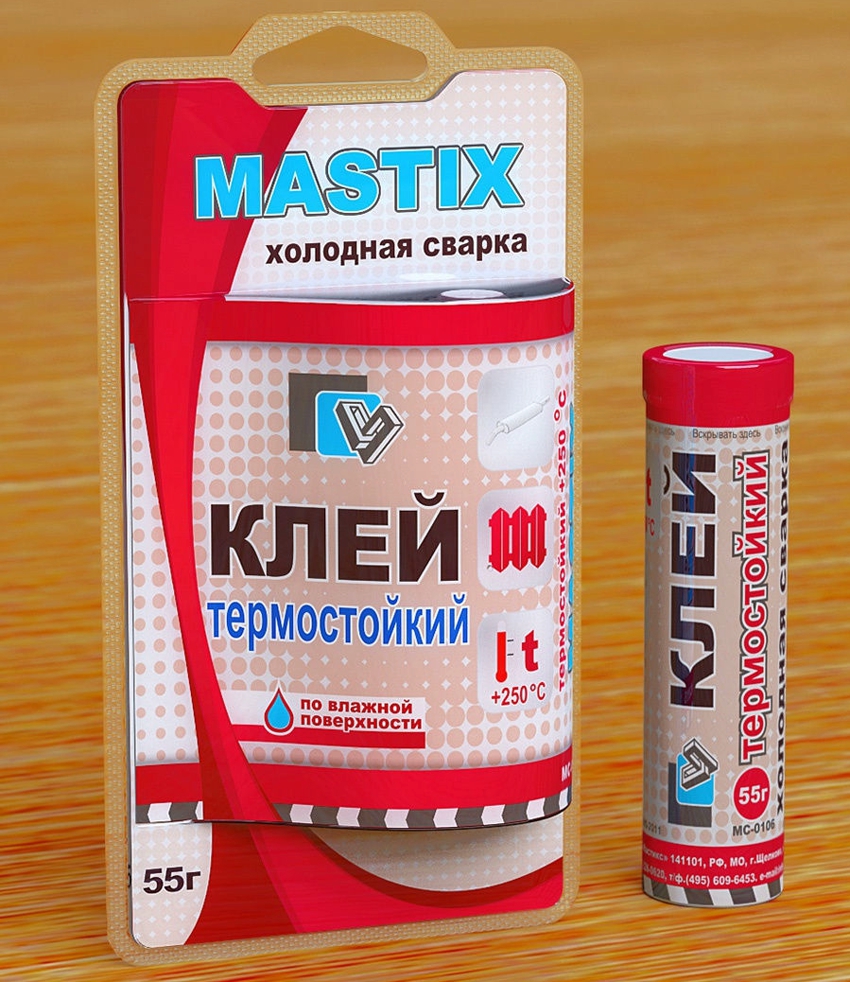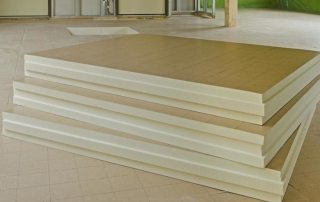The method of joining metal parts involves temperature exposure. Modern technologies and developments in the field of construction and repair offer an alternative solution: cold welding for metal in the process of plastic deformation of the material penetrates into the welding surfaces, ensuring their reliable connection. This method of gluing has recently become especially popular due to its availability and ease of use.
Content
Cold welding: material advantages
The material called cold welding actually does not imply actions associated with the use of welding machines, but got its name due to the result of its use in various fields. Parts made of various metals are glued together due to the welding compound penetrating into the top layer of one of the parts, ensuring their strong connection.
Next, let's see how cold welding works. The process itself takes place under high pressure, and the solidity of the finished product depends precisely on the welding material. The connection of the components occurs as a result of deep plastic deformation of both the adhesive itself and metal parts.
The upper metal layer is deformed due to the fact that the oxide layer enters its coating. The details are as close to each other as possible so that the crystal lattices actually merge at the molecular level. Thus, a strong chemical reaction occurs.
All types of metal can be bonded with cold welding, including non-ferrous, precious and ferrous metals. It is also possible to combine dissimilar metal connections, for example, to make solders on aluminum wires. The use of cold welding is especially popular in cases where it is necessary to combine metals that cannot withstand high temperatures, suggesting traditional metal welding.
The main advantages of cold welding are as follows:
- lack of heating, which avoids deformation of the parts to be glued;
- as a result of gluing, a neat and reliable seam is obtained;
- the use of the material does not imply the presence of waste;
- saving energy resources;
- no special training and skills are required for use;
- lack of additional tools;
- the process does not emit smoke and gas, which ensures its environmental friendliness and harmlessness.
What is cold welding: composition and properties
By its composition, cold welding is a one-component or two-component viscous or liquid material with high adhesive properties. In simpler terms, this is glue for iron, designed for gluing parts from a wide variety of metals.
Important! Cold welding is sometimes used in situations where the traditional method is not applicable. For example, for the repair of a container intended for the storage of explosive materials.
The material includes the following components:
- Epoxy resins. The basis of cold welding, which is responsible for its high adhesion, is formed by various epoxy resins. The same material makes it plastic and homogeneous.
- Metallic component. A substance based on metal dust is used as a filler.
- Additional substances. The composition of the glue can also include sulfur and other chemicals, modifiers.
A mixture of the listed materials ultimately gives a homogeneous polymer composition - a glue for metal. Cold welding due to them has high adhesive qualities. Depending on the amount of constituent substances, cold welding can be:
- one-component, which should be used one-time, since after opening the package, the material loses its quality;
- two-component, which involves reusable glue. Moreover, even with long-term storage, the material does not lose its adhesive qualities.
The packaging for the glue is a cylindrical elongated tube. From above, the composition is covered with a hardener, and inside there is an epoxy resin mixed with metal dust.
Wide range of applications for cold metal welding
Despite the fact that such a tool as cold welding was invented relatively recently, it very quickly gained popularity in a wide variety of applications. In particular, it is used by:
- for gluing plumbing elements, mainly water, sewer and heating pipes, both made of plastic and metal;
- for fixing linoleum on the floor and seams between rolls;
- in the electrical engineering industry, including with micro parts;
- in a variety of industries, for example, in the production of household appliances:
- for gluing aluminum and copper wires together.
Wherever cold welding is used, it should be remembered that only partial use is permissible, since the seam after this method of connection will be less strong than after classical welding of parts. Therefore, this glue is mainly used for repairs, and not for the production process: only small parts are connected, and not supporting structures. The actual strength of the material depends on its composition and on compliance with the rules for using the product.
Interesting! Cold welding is produced in different colors, which is especially beneficial for small repairs of parts and elements.
Temperature characteristics of metal-to-metal adhesive
By its characteristics, cold welding is heat-resistant and can withstand rather high temperatures, depending on the composition of the product. Usually these parameters are indicated on the package.If you follow all the recommendations, then the seam when joining the parts will be quite strong.
Thermal properties are directly proportional to how much it costs to weld the metal. In most cases, inexpensive formulations can withstand a maximum of 260 ° C. In this case, the main thing is to observe the technology of application, then the required strength will be achieved, even if the price of cold welding is low. And after bonding, simply do not expose the parts to temperatures that exceed the recommended temperature range.
There are compositions on sale that can withstand higher temperature conditions - this is high-temperature cold welding for metal. Such an adhesive can retain its benefits when exposed to temperatures above 1300 ° C. Such a tool is used to connect parts that are constantly exposed to excessive heating, and it is rather difficult to use classical welding in their repair.
Cold welding for metal: material classification
As a popular material, cold welding has its own special classification. Adhesives are distinguished depending on the manufacturer, the scope of application, as well as the consistency of the material. The modern market offers a variety of compositions, both domestic and imported. Most of the Russian goods are distinguished by a lower price of cold welding for metal, but the quality of such material is also poor.
Therefore, if financial opportunities allow, it is better to purchase glue from such well-known brands as ABRO or Hi-Gear. If you still choose domestic manufacturers, then you should pay attention to cold welding glue Almaz or Polymet. The most popular cold welding in this segment of the domestic market Moment.
Depending on the consistency of the composition, there are:
- liquid welding for metal is a two-component material that is mixed immediately before use;
- dry welding;
- plasticine-like glue - this composition got its name due to its consistency, similar to children's plasticine. It can be single-layer or double-layer.
Depending on the material, the compositions are:
- universal, which are designed to work with a variety of materials, in particular for gluing wood, metals or polymers;
- with limited use, such as cold welding for cast iron or cold welding of aluminum.
If the method of applying the agent acts as a criterion, then cold welding is:
- point, with which it is easy to close a small hole or put a seal;
- suture allows you to close cracks;
- butt is used to connect two parts.
Which cold welding is best? For metal, you need to purchase a composition that is suitable for connecting metal parts. In order not to make a mistake in the choice, you should not use tools that are not designed to work with this particular material. For example, cold welding for aluminum is not suitable for gluing linoleum or gluing wood.
According to the scope of application, the material is intended:
- for joining metal (metal dust is necessarily included in the composition);
- for welding parts in the automotive industry;
- for work under water and in other special conditions.
Cold welding for metal high temperature water resistant
High-temperature, and also water-resistant cold welding for metal is considered the highest quality representative among epoxy-based adhesives. A distinctive feature is the ability to maintain its performance even when exposed to very high temperatures.
The thermal stability of such a product implies a wide scope of its use. In everyday life, it is used to repair radiators, gas equipment, dishes, waterproof high-temperature cold welding is also popular in car repairs, etc.
Thus, we can briefly describe the main advantages of such a material:
- a wide variety of materials to be joined, since the glue can glue parts made of aluminum, brass, steel, cast iron and precious metals;
- ease of use does not require special skills and implies use even in the field;
- high quality weld, which does not oxidize and is not vulnerable to chemical attack and corrosion;
- possible subsequent mechanical processing, including the use of sandblasting devices;
- environmental friendliness is confirmed by the absolute harmlessness to others.
Despite the large number of advantages, the material also has disadvantages:
- work should be carried out only at room temperature, otherwise you should not expect a high quality seam;
- the high cost of the material excludes its use in industry, since the use of traditional welding in batch production, even with the remuneration of highly qualified workers, turns out to be more profitable, given how much cold welding costs.
Consistency classification: dry and liquid welding
When choosing a material, they are guided not only by the composition, but also by the method of connecting the components. According to this classification, welding can be liquid, dry or plastic-like. The main differences lie in the way the material is applied.
Liquid welding is a two-component material as the epoxy-based adhesive and hardener are packaged separately. Before using cold welding, the contents of both tubes are connected. In this case, it is not necessary to completely mix the components, but you can take a certain amount. When stored properly, residues can retain their adhesive properties for a long time. The strength of the connection will help to strengthen the reinforcing mesh.
Helpful advice!Since after opening the tube, the composition may lose its properties, it is recommended to carefully study the instructions for use of cold welding for metal even before the package is opened.
Plastic-like or dry welding for metal is packed in branded packaging, in the middle of which is a rod with two multi-colored layers. For gluing, take the required amount of material, knead it like plasticine, and then apply it to the surfaces to be glued. The rest of the material should be stored in a cool place without access to air, otherwise it will lose its properties.
Related article:
Penetrating waterproofing for concrete: the best way to protect against moisture
Operating principle. Advantages and disadvantages. Review of popular brands. Varieties of penetrating compositions and features of their application.
In both cases, it is of particular importance how quickly the prepared composition is used. Drying times can range from ten minutes to three days. Therefore, you should not hesitate and it is advisable to complete all the preparatory work in advance. One of the main conditions for a successful gluing result is a tight adhesion of the product to the surface. Information on how long cold welding of a particular brand dries can be found in the instructions.
How to use cold welding for metal: method of application and sequence of work
One of the main advantages of cold welding is ease of use, which does not require complex equipment or specific skills. When using it, the main thing is to follow strictly the instructions.
Before starting work, it is necessary to prepare both the surfaces to be glued and additional components, which include:
- clamps for fixing;
- sandpaper;
- special solvent or simple acetone.
Before opening the package with an adhesive mixture, you must carefully study the instructions. Cold welding for different types of metal provides for individual application characteristics, however, all are characterized by the following sequence of work:
- Preparation of surfaces to be glued. In the places where the seam passes, the material is carefully cleaned, since the result of the work will largely depend on this.
- Degreasing surfaces. In this sector of work, it is best to use a special anti-silicone solution, but any solvent, or ordinary acetone, will work.
- Preparation of the mixture. It is at this stage that you should act in accordance with the instructions attached to the material.
- Material application and surface bonding. For this purpose, the prepared mixture is applied to areas of the material, leveled, giving the required shape. You should act at this stage as quickly as possible, since the material sets very quickly. How much cold welding of a particular type hardens is indicated in the instructions. Usually the process lasts a day - after this time, the repaired item is ready for use.
- Elimination of flaws. This is the final stage of the work. During which you need to thoroughly clean the remnants of the mixture with ordinary sandpaper.
High-temperature waterproof cold welding for metal: instructions, application features
Cold welding with additional properties such as the ability to withstand high temperatures and exposure to moisture, comes in a special plastic form, which implies some peculiarities in the order of its use.
Important! The main advantage of high temperature cold welding is the ability to expose the joint to high temperatures, which can reach 1300 ° C. Therefore, the tool is widely used in the repair of heating elements, radiators, heating boilers, etc.
The material is characterized by density and two-component composition, therefore, when using it, you first need to cut off a part of the cylinder of the required length with a knife, observing the perpendicularity relative to the axis, thus ensuring the required proportions of epoxy resin and hardener.
It is advisable to wet your hands and proceed to thoroughly kneading the cut off part of the welding. Crumple until the desired degree of homogeneity and elasticity is achieved. In this case, the mass should acquire a uniform color. To prevent the material from sticking to your hands, you need to regularly moisten them with water.
Further, the resulting homogeneous and sticky mass must be applied to the surfaces to be glued and evenly distributed. You need to act quickly, since the composition sets already a few minutes after use.
It is better to apply the material in several layers - the reliability of welding depends on this. In this case, the first layer should be no more than 6 mm, and the second should be applied only after the previous one has completely dried. It will take about three hours to dry, and the seam will reach full strength after a day. Then you can use the product.
How to use cold welding for metal: video, basic rules
Basic rules for using cold welding:
- The composition, produced in liquid form, is sold in special tubes in the form of a syringe. Before use, the components must be thoroughly mixed in a convenient container, and not immediately started the gluing process.
- Work should be carried out with rubber gloves.
- When using plastic or dry cold welding, it is better to take the material in small pieces, apply the composition gradually to small areas. Rational use will help save material and money, since it is not cheap.
- Some expensive modern formulations do not provide for the mandatory degreasing of the bonding surface. Information on carrying out this manipulation is contained in the instructions.
When working with cold welding, certain precautions should be taken, taking into account the following factors:
- Compounds for gluing metals can irritate the skin and mucous surfaces, therefore, in case of contact with open areas of the body, and even more so in the eyes, rinse them thoroughly with running water.
- The material is plastic and can attract the attention of children, so it should be kept out of their reach.
- After cold welding is applied to the surface, external stress must be completely eliminated for the drying period specified in the instructions.
A detailed description of the process of working with cold welding can be found in a special video instruction.
Important! If a piece of welding is accidentally swallowed during work, then it is necessary to drink a large amount of water, induce vomiting and seek medical help.
Cold welding for metal: reviews and material selection criteria
The modern market offers a wide range of various building materials, including such a means as cold welding for metal. Competition and popularity give rise to many counterfeits and low-quality formulations on the market. Therefore, when choosing a tool, you should focus on the following aspects:
- The purpose of the composition and the features of the surfaces that need to be glued should be taken into account.
- Pay attention to temperature range. It should be as high as possible.
- Before purchasing the composition, you must read the instructions and compare with the possibility of use in certain conditions.
- Pay attention to the manufacturer of the composition. It should be noted here that the world market leaders in the production of cold welding are Devcon, Poxipol, ABRO, Hi-Gear, Mastix, WEICON, Permatex, Loctite. Domestic products are less popular, but they are much cheaper. The brands Polymet and Almaz have proven themselves quite well.
Based on consumer feedback, cold welding is a reliable assistant in carrying out various types of repair work, the use of which does not require a powerful source of electrical energy in order to heat the workpieces. Moreover, the seam after this welding method is not contaminated with impurities, it is distinguished by its uniformity and high anti-corrosion properties. The process itself is pretty quick and easy.
Poxipol cold welding: instructions and characteristics
Poxipol cold welding is produced by a Uruguayan company with the same name. It is one of the most popular adhesives on the world market. The tool is widely used in various fields for reliable connection of a wide variety of surfaces. In this case, no special conditions are required, which makes it possible to use it in everyday life.
According to the instructions, Poxipol is a two-component glue based on epoxy resin. It is pasty in consistency and does not contain solvent. The maximum shear strength of the seam exceeds 993 N with a shear stress of 2.2 MPa, and a pull-off stress of 5.4 MPa, with a shear test equal to 237 H.
Adhesion to the surface takes place within an hour, and the seam completely hardens after 24 hours. The solution is plastic for 10 minutes, which makes it possible to correct its location on the parts to be joined. Cold welding Poxipol is produced in two tubes with a volume of 14-70 ml.Their contents are mixed strictly before use, adhering to a 1: 1 ratio.
Useful advice! It is best to buy cold welding from specialized stores. In this case, you should pay attention to the price, since branded products will cost an order of magnitude higher than a fake of dubious quality.
The disadvantages of Poxipol cold welding are the low melting point, which is 120 ° C, so the scope of application of the glue is somewhat limited. Drying time of 24 hours also refers to the disadvantages of the composition, as well as low tensile strength. Therefore, the use of cold welding for the repair of parts subject to shock or vibration is excluded. Another disadvantage is the need to thoroughly prepare surfaces before work, which includes complete dusting and degreasing.
Cold welding Mastix: characteristics and scope
Cold welding Mastix is a popular material in the domestic market, which is explained by its high performance characteristics and, as a result, widespread use, both in production and in everyday life.
By its composition, Mastix is a ductile material in the form of a two-layer rod. The layers are separated by the packaging material, and they must be mixed immediately before work. Cold welding consists of amine and epoxy resins, metal filler with the addition of minerals.
The material is resistant to high temperatures, which increases its advantages over other formulations. The temperature range ranges from -60 to 150 ° C, while the performance and initial volume are fully preserved. Release form - soft packaging weighing 55 g. The product can be stored at temperatures up to 30 ° C.
Cold welding Mastix can be used not only as glue, but also to create all kinds of parts and their parts. The tool is used to eliminate chips and cracks, for example, in the repair of heating batteries. The composition is used in the repair of furniture and dishes, and the tightness of the resulting seam allows it to be used for the restoration of aquariums and glass on stained-glass windows.
Thus, cold welding for metal is a reliable assistant in various fields, in particular, where the use of a traditional welding machine is impossible. In addition, special skills are not required to use it; it can be used in a domestic environment. The main thing is to correctly navigate the choice of the composition and strictly follow the instructions for use.
